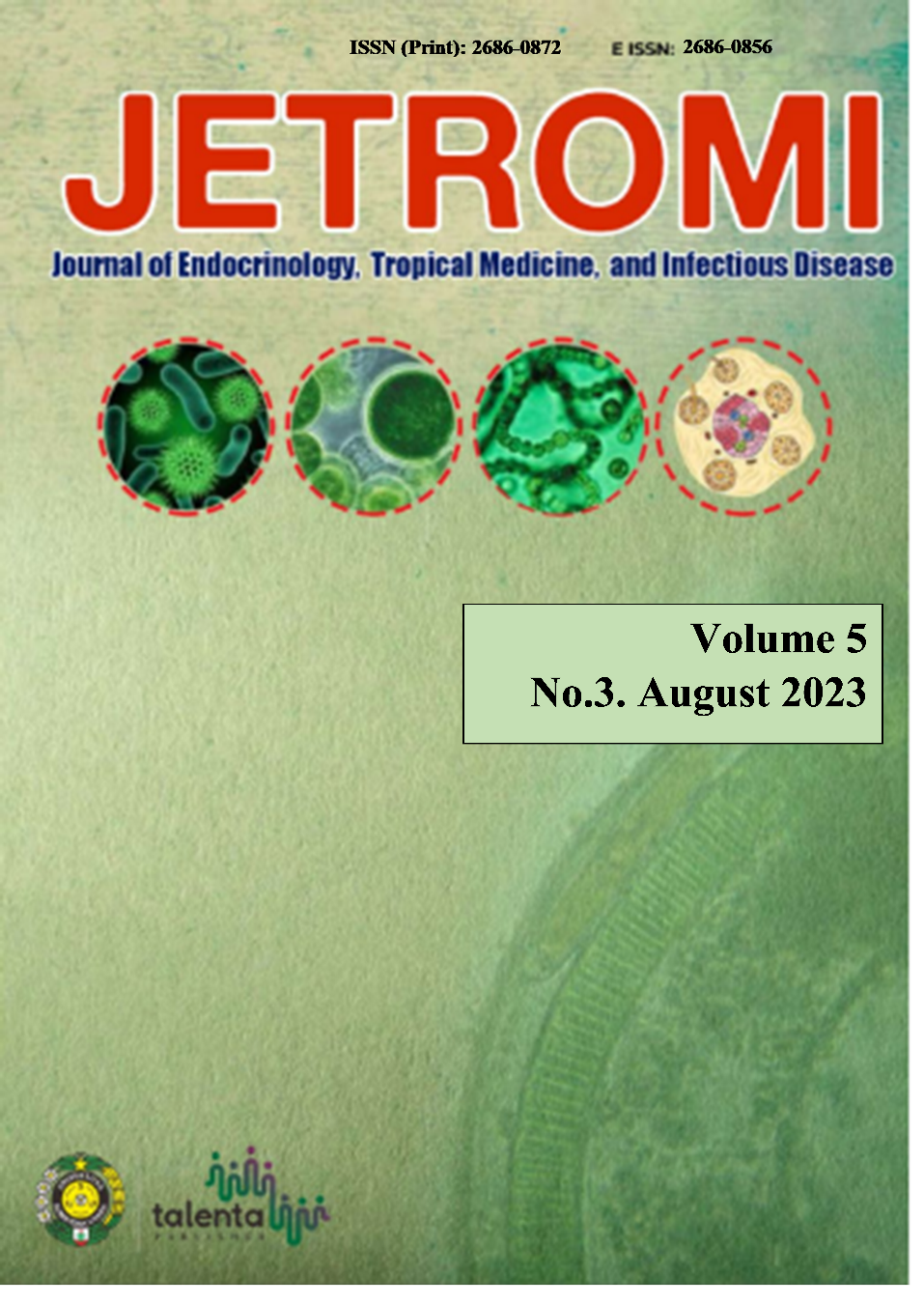A Correlational Study Elevated Risk of Cardiometabolic Illness and the Prevalence of Obstructive Sleep Apnea Among the Population of Tebing Tinggi, North Sumatra, Indonesia
DOI:
https://doi.org/10.32734/jetromi.v5i3.14330Keywords:
Cardiometabolic, Obesity, Obstructive Sleep Apnea, OSAAbstract
Background: Obstructive Sleep Apnea (OSA) is a prevalent sleep-related breathing issue, marked by repeated full or partial blockages of the upper airways. It's a primary respiratory condition that heightens the chances of cardiometabolic diseases. In our research, we explored the link between the increased risk of cardiometabolic ailments and the potential for OSA.
Method: We studied 75 participants during community service activities and investigated the association between the high risk of cardiometabolic disease and the risk of OSA in the Society of Tebing Tinggi. We measured variables such as gender, age, weight, height, Body Mass Index (BMI), blood pressure, heart rate, random blood glucose, waist and neck circumference, and total cholesterol. Subsequently, we categorized the data and performed chi-square tests to analyze the associations between various factors and the risk of OSA. Variables with p<0.05 are considered eligible for multivariate analysis using binary logistic regression.
Results: We identified 42 patients had a high risk of OSA (59.2%), while 33 patients had a low risk (40.8%). The study identified significant links between OSA risk and gender, age, blood pressure, and neck circumference (p-values <0.001, <0.001, and 0.01 respectively). In contrast, BMI, heart rate, glucose levels, waist size, and cholesterol did not show a significant connection to OSA risk. This indicates that while certain factors like gender, certain age groups, hypertension, and neck size are important in assessing OSA risk. However, BMI, heart rate, random blood glucose, waist circumference, and total cholesterol are not significant factors in determining the risk of OSA (p=0.2, p=0.4, p=0.2, p=0.1, p=0.9).
Conclusions: Higher risk of cardiometabolic diseases (older age, gender, hypertension, neck size) was positively associated with the risk of OSA.
Downloads
Downloads
Published
Issue
Section
License
Copyright (c) 2023 Journal of Endocrinology, Tropical Medicine, and Infectious Disease (JETROMI)

This work is licensed under a Creative Commons Attribution-NonCommercial-ShareAlike 4.0 International License.
The Authors submitting a manuscript do so on the understanding that if accepted for publication, copyright of the article shall be assigned to Journal of Endocrinology, Tropical Medicine and Infectious Diseases (JETROMI).
Copyright encompasses exclusive rights to reproduce and deliver the article in all form and media. The reproduction of any part of this journal, its storage in databases and its transmission by any form or media, will be allowed only with a written permission from Journal of Endocrinology, Tropical Medicine and Infectious Diseases (JETROMI).








